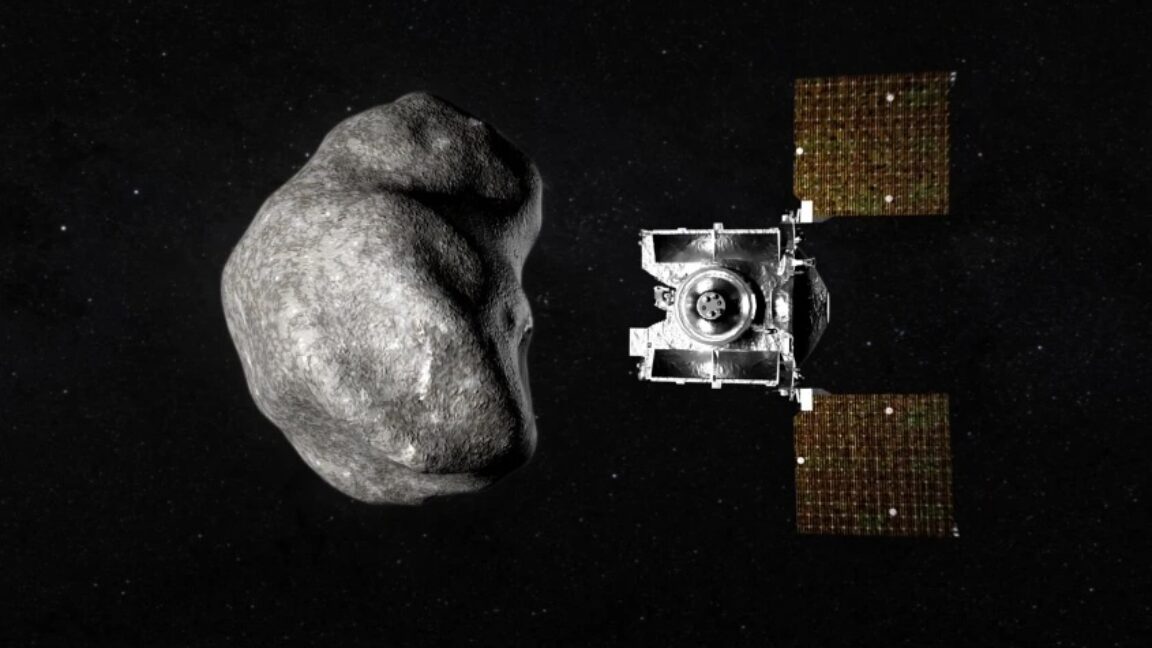Science
NASA Revives OSIRIS-APEX Mission While Others Face Uncertainty

NASA has reinstated the OSIRIS-APEX mission, reversing a previous decision by the Trump administration to terminate it. This mission aims to explore the asteroid Apophis, which will pass approximately 20,000 miles (32,000 kilometers) from Earth on April 13, 2029. The decision comes after significant pushback from lawmakers against proposed cuts to NASA’s science budget.
According to Dani DellaGiustina, principal investigator at the University of Arizona, the mission was initially marked for cancellation as part of a broader budget proposal that sought to eliminate 19 science projects. “We were called for cancellation as part of the president’s budget request, and we were reinstated just two weeks ago,” DellaGiustina noted, adding that the spacecraft is currently in good condition.
OSIRIS-APEX repurposes technology from the OSIRIS-REx mission, which successfully returned samples from the asteroid Bennu in 2023. The spacecraft’s exploration of Apophis presents a unique opportunity for scientists to study a potentially hazardous asteroid. Despite its potential threat, Apophis has no chance of impacting Earth in 2029 or for the next century. However, its trajectory frequently intersects with Earth’s orbit, necessitating ongoing observation.
Budget Cuts and Legislative Response
The Trump administration’s proposed budget cuts aimed to reduce NASA’s science funding by nearly 50% for fiscal year 2026, which began on October 1. While the House of Representatives proposed a budget of $6 billion for NASA’s science division, the Senate maintained funding at $7.3 billion. Ultimately, lawmakers earmarked $20 million specifically for OSIRIS-APEX, distinguishing it from the other missions facing cancellation.
Despite the reinstatement of OSIRIS-APEX, many other missions remain in limbo. The Magnetospheric Multiscale Mission (MMS), designed to study Earth’s magnetosphere, also received $20 million in the House bill, but the future of 17 other missions remains uncertain. Earlier this year, NASA had directed managers of all 19 missions at risk of cancellation to prepare termination plans, which raises concerns about the viability of these programs.
Impact on Scientific Research and Personnel
The budget cuts have led to significant challenges for NASA’s science teams. DellaGiustina indicated that the OSIRIS-APEX team is effectively on hold until at least 2027, which hampers long-term planning and training for younger scientists involved in the mission. “We are definitely undermining our readiness,” she stated, highlighting that while they do not anticipate cutting any planned science at Apophis, essential activities like recalibrating instruments have been affected.
The ongoing budgetary uncertainty also threatens the operational capacity of the spacecraft. Engineers from Lockheed Martin, which built OSIRIS-APEX, are being reassigned to other projects, impacting the mission’s continuity. Other missions, including the Chandra X-ray Observatory and the MAVEN spacecraft studying Mars, are similarly awaiting guidance from NASA.
The cumulative investment in missions targeted for termination amounts to $12 billion, according to the Planetary Society, a science advocacy group. With operating missions costing taxpayers less than $300 million annually, advocates argue that the cuts represent only a small fraction of NASA’s overall budget but could have far-reaching consequences for scientific discovery.
As discussions continue in Congress regarding NASA’s funding, scientists and advocates have raised concerns about the long-term implications of these proposed cuts. The recent budget proposals indicate that public pressure may be influencing legislative decisions, but the damage inflicted during this period of uncertainty could have lasting effects on scientific research and personnel.
In conclusion, while the OSIRIS-APEX mission has been spared, the future of many other critical NASA projects hangs in the balance. The ongoing developments in Washington will play a decisive role in shaping the landscape of space exploration and scientific discovery in the coming years.
-

 Education3 months ago
Education3 months agoBrandon University’s Failed $5 Million Project Sparks Oversight Review
-

 Science4 months ago
Science4 months agoMicrosoft Confirms U.S. Law Overrules Canadian Data Sovereignty
-

 Lifestyle3 months ago
Lifestyle3 months agoWinnipeg Celebrates Culinary Creativity During Le Burger Week 2025
-

 Health4 months ago
Health4 months agoMontreal’s Groupe Marcelle Leads Canadian Cosmetic Industry Growth
-

 Science4 months ago
Science4 months agoTech Innovator Amandipp Singh Transforms Hiring for Disabled
-

 Technology4 months ago
Technology4 months agoDragon Ball: Sparking! Zero Launching on Switch and Switch 2 This November
-

 Education4 months ago
Education4 months agoRed River College Launches New Programs to Address Industry Needs
-

 Technology4 months ago
Technology4 months agoGoogle Pixel 10 Pro Fold Specs Unveiled Ahead of Launch
-

 Business3 months ago
Business3 months agoRocket Lab Reports Strong Q2 2025 Revenue Growth and Future Plans
-

 Technology2 months ago
Technology2 months agoDiscord Faces Serious Security Breach Affecting Millions
-

 Education4 months ago
Education4 months agoAlberta Teachers’ Strike: Potential Impacts on Students and Families
-

 Education3 months ago
Education3 months agoNew SĆIȺNEW̱ SṮEȽIṮḴEȽ Elementary Opens in Langford for 2025/2026 Year
-

 Science4 months ago
Science4 months agoChina’s Wukong Spacesuit Sets New Standard for AI in Space
-

 Business4 months ago
Business4 months agoBNA Brewing to Open New Bowling Alley in Downtown Penticton
-

 Business4 months ago
Business4 months agoNew Estimates Reveal ChatGPT-5 Energy Use Could Soar
-

 Technology4 months ago
Technology4 months agoWorld of Warcraft Players Buzz Over 19-Quest Bee Challenge
-

 Business4 months ago
Business4 months agoDawson City Residents Rally Around Buy Canadian Movement
-

 Technology2 months ago
Technology2 months agoHuawei MatePad 12X Redefines Tablet Experience for Professionals
-

 Technology4 months ago
Technology4 months agoFuture Entertainment Launches DDoD with Gameplay Trailer Showcase
-

 Top Stories3 months ago
Top Stories3 months agoBlue Jays Shift José Berríos to Bullpen Ahead of Playoffs
-

 Technology4 months ago
Technology4 months agoGlobal Launch of Ragnarok M: Classic Set for September 3, 2025
-

 Technology4 months ago
Technology4 months agoInnovative 140W GaN Travel Adapter Combines Power and Convenience
-

 Science4 months ago
Science4 months agoXi Labs Innovates with New AI Operating System Set for 2025 Launch
-

 Technology4 months ago
Technology4 months agoNew IDR01 Smart Ring Offers Advanced Sports Tracking for $169










